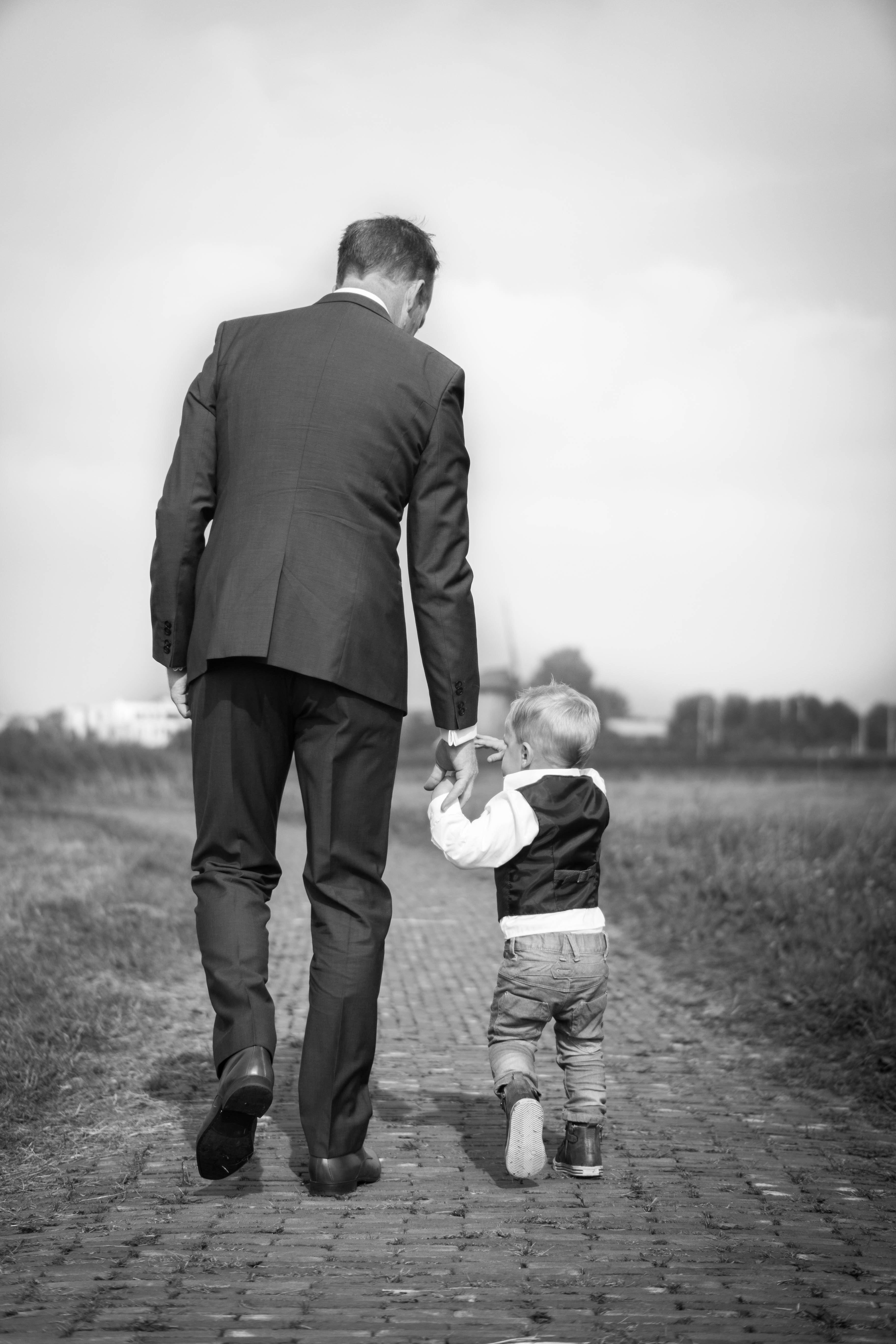Adoption awareness has come a long way in recent years. As a society, we are more aware of the benefits of open adoption and how positive it can be for all members of the adoption triad. Birth mothers have more of a voice than ever before and we are recognizing the importance of making sure they are well supported throughout their lifetime. We still have much progress to make and I would like to spend some time talking about birth fathers. No adoption plan can take place without a birth father, yet they are rarely spoken about and often portrayed in a negative light. Just as we work to erase the negative stigmas associated with birth mothers, it is time for us to do the same regarding birth fathers.
When adoption stories are shown on TV, they are many times represented by a young girl choosing to place her child for adoption alone, without a birth father involved. This may be played out as him not even being told about the pregnancy or choosing to not be involved for some elaborate, dramatic reason. Many times, the absence of the birth father is not mentioned at all. All of these situations can be true to what happens in real life but the stories of the other side of the coin are rarely shown.
First of all, not all birth parents are teenagers or single. There are plenty of couples of all ages that place their children for adoption. These couples can be newly together or even married. Teen pregnancy rates have dropped considerably in the last ten years as the focus on education about birth control has gained a wider reach. Teens of the latest generation are taking more control of their health and bodies. Young women especially are making their voices heard about the fact that safe sex is not just the woman’s responsibility.
Additionally, both young men and women are taking more time to prioritize their careers before starting a family to ensure they are prepared to parent. This shift in mindset from the outdated thinking of our parents’ generations has made men and women more equal partners in all aspects of life and really removed the notion that every adoption starts with a single teenager in a crisis situation. Of course, there are still situations where that is the case but we need to remember that birth parents come in all shapes and sizes and that applies to birth fathers as well. Each situation is unique and an adoption plan can look different for everyone.
I myself am a birth mother and while I was pregnant, the agency I was placing with had a dormitory where women could live while pregnant and considering adoption. At the most, I lived with 13 other pregnant women at once that each had different circumstances that led them to that place in that season of their life. Besides being pregnant and considering adoption, the other thing we all had in common was that each woman had a birth father tied to her story in some way. But like those birth mothers, each story was different.
The details of the birth father associated with their stories covered a wide variety of situations. Some birth fathers never got the opportunity to even know about their children while others chose to not be involved. Each state has a different process for what a birth father’s rights are and in some, there is a certain time frame a birth father has to consent to before the adoption can be legalized.
For a birth father who does not even know about the pregnancy, this can be heartbreaking to find out about many, many years down the road. There are birth mothers who might decide to exclude information in regards to who the possible birth father might be. Sometimes there are multiple possibilities and when a birth mother informs the agency or lawyer she is working with, there is an attempt to contact each man to terminate his parental rights. Unfortunately, there is nothing to go on except the word of the birth mother and in her pain, she might decide it is better to not mention all pertinent information. This leads to many men not even knowing they fathered a child. That can also complicate things later on for the adoptee attempting to find their biological family if they choose to.
Birth mothers can often be much more easily found because there is only one possibility for the adoptee and as mentioned, open and semi-open adoptions are becoming more commonplace. Attempting to find a birth father proves more difficult and locating a birth father can be a complicated mess for the adoptee, only adding to the pain they might already be experiencing while searching for a biological connection. Recent technology with at-home DNA testing and the ever-expanding world of social media can be helpful but having such a difficult search for birth fathers is only adding to the negative light surrounding them.
On the flip side, other men are just as involved in the entire process. A couple may choose to place their child for adoption for many of the same reasons a single birth mother does. They could already have children and know they are unable to provide for another. They could be at a point in their lives where they are not ready for any children at all. The circumstances for why they choose adoption really do not even matter. What is important is that the birth father is just as involved in every aspect of the decision-making process and they deserve the same amount of post-placement support. These types of scenarios are happening more frequently so as the world continues to become more progressive in thinking, so should we in regards to the way birth fathers are viewed.
For any member of the adoption triad, a child placed for adoption is a traumatic event. Birth fathers are not exempt from this just because they are not the ones that physically give birth to the child. Although not true in every case, most men do handle grief and loss differently than a woman does.
Men are told as young boys to keep their emotions inside and be strong for their families and partners. Young boys watch their fathers be the head of the household and from an early age see the weight that carries for a man. Or a child could grow up in a household without a father present and vow to do things differently for their own families. Crying is thought to be a sign of weakness in the minds of many men and trying to navigate grief after placing their child for adoption, whether involved in that process or not, can prove even more difficult because of the stigmas that birth fathers face.
Many men turn their feelings inward and never verbalize the true pain they are feeling. They are viewed as cold or callous due to their lack of emotions but in reality, the emotions are the same as the birth mother is experiencing. This adds to the idea that birth fathers do not care about a child placed for adoption, only adding more weight to the negative stigmas. Men are less likely to cry, less likely to process their emotions, and less likely to seek out support.
On the flip side, there are men who are vocal about the pain they are experiencing but lack the resources to help them cope. Even in doing research for this article, I am unable to find any support groups that are for birth fathers only. We know how important continued support is for a birth mother after placement so why wouldn’t it be the same for birth fathers? There are many support groups that promote being open to all birth parents but the lack of present birth fathers at these groups is very apparent.
The adoption community is aware of the lack of men taking advantage of post-adoption resources. A good solution has not been presented to rectify this. In my research, I found the common theme for why a birth father might not attend a support group is to not be shamed. Many are struggling with the immense shame they are carrying with them like a badge they never wanted to wear. Shame for any birth parent is one of the toughest things to cope with. The best way to manage it is to open up to those that love and accept you unconditionally.
Connecting with other birth fathers by gathering to discuss the feelings that come with placing a child for adoption could be a great place for these men to start. Changing the way we think about birth fathers allows these men to have an opportunity to push past their fear of judgment and begin the healing that they too deserve. It might make it easier for birth fathers to take the first step and attend a support group if they felt safer in their ability to be open about their feelings.
Personally, I can speak to the differences of birth fathers because as mentioned, I am a birth mother. I placed my child for adoption 14 years ago and during that time, the birth father was not at all involved. He signed his rights away before the child was even born. A long, detailed story later, I am now married to the birth father and we have three children of our own. At the time, he fit the stereotypical description of birth fathers perfectly. He was a scared teenager and had no idea how to handle the life-changing situation that was unfolding.
For a birth mother, the weight of the child growing inside her prevents her from physically running away in the way a birth father can, even if she is feeling just as scared and confused as he. That is just one tiny fraction of my child’s birth father’s story and you as the reader could easily judge him based on that information alone. However, just as I am no longer a scared and pregnant 17-year-old, neither is he the person he once was. Birth fathers grow and mature in the same way that a birth mother does. We cannot pigeonhole either into being stagnant or stuck at one stage in their life.
Giving birth fathers more credit is a challenge we all must accept. In the world of 2021, every person should have the opportunity to access the help, love, and support they need. Birth fathers at the core are human, just like you or I. Think of yourself as being defined by the decisions of every person similar to you. Yes, there are situations where the birth father isn’t involved even if he has every resource available to support the birth mother. There are cases of abuse, neglect, and even more horrible, painful situations that make placing a child for adoption necessary but that cannot be said for every birth father. We cannot think about birth fathers as a group, but as individuals.
There is no handbook for adoption and no set way for how it should unfold. But birth fathers deserve the ability to access all the same support both before and after placement. We have to give birth fathers more credit simply because they are all different. The best parts of any person are what makes them different from the next and birth fathers are no exception. All it takes is a little education and understanding to start the ball rolling towards eliminating the negativity that surrounds what we might not understand. We have come a long way as a society but the work never ends to understand each other. Starting today, will you make the change needed to view birth fathers differently?




